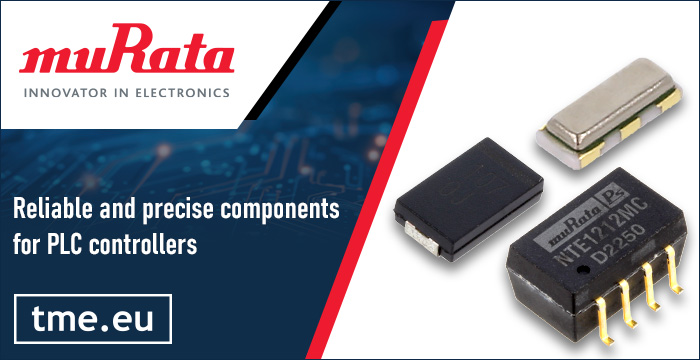PCB |
Consequences for surface technology<br>not to be underestimated
REACH is the new catchword on the chemicals horizon, although actually it is not so new since the "child" was born back in 1999; perhaps even earlier, considering all the discussions about safety and hazardous materials that have been dragging on for at least thirty years.
Since births are nearly always associated with feelings, this perhaps explains why the REACh discussions were conducted in a highly emotional atmosphere right up to June 2007. The Internet consultations yielded 6400 comments. No wonder - since the draft regulation comprised more than 1200 pages!
It all started when the European ministers of the environment realized early in May 1999 in Weimar that they only had a vague idea about many of the substances used by various production facilities in the EU upwards of a volume of 1000 tons p.a. Indeed, there are currently workplace limit values for only a fraction of the substances. To remedy matters they wrote a paper, a so-called white paper, that was published in February 2001. It was entitled "Strategy for a future chemicals policy". To add a personal touch to the whole matter, the then competent EU commissioner, Margot Wallström, even had a sample of her blood taken and analysed for all the substances it contained. This health check was not done in order to be an example to others but to demonstrate everywhere where hazardous substances can be found.
After years of discussion, a regulation has now evolved from this white paper that has become known as REACh. Actually, this is not quite right. The reason: some companies are already talking about PEC and PNEC and letting themselves be certified by supervising agencies purporting to be best prepared so that they can and will meet the REACh requirements. The others, and that seems still to be the vast majrority, have absolutely no idea what is in store for them.
REACh is the acronym of Registration, Evaluation and Authorization of Chemicals. What is it all about? Numerous chemical materials are used in industry but little or nothing is known about how harmful they can be to humans and the environment. Since 1981, the previous policy on chemical substances has yielded information on the effects of less than 0.1% of the substances. To avoid passing on know-how to their competitors, companies had provided the least possible information and reports on applications and properties. This is now about to change.
Producers of chemicals or traders who import substances into the EU or have them produced here, are now being urged to communicate various materials data, extending beyond the scale of the present safety data sheets, to the agency that has been specifically set up in Helsinki. The results of this mean that under REACh more information will be available through registration with the chemicals safety report (CSB) and safety data sheet (SDB).
To handle all new information needs money, which is first and foremost the task of the producers of these substances. However, anyone who now thinks he is on the safe side will be taught otherwise at the latest at the time of risk assessment. In surface technology, REACh will also have consequences for the users, and these should not be underestimated. REACh is quite clearly more than just an inflated safety data sheet with new data. But OH&S officers, for example, will find it advantageous if a proper data sheet and useful technical sheets are produced quasi as byproducts.
After all, many a production process will also be put to the test. When the costs of data acquisition for registration exceed profits, some materials will simply no longer be produced and will disappear from the market. The users and buyers of those materials will then have a major problem on their hands, particularly if they cannot switch to substitute products or are tied to customer requirements.
For the users REACh brings a changeover to the immission principle. In future, the user is required to check whether his emissions can cause unacceptable levels of immission into the environment. This means that he must know the chemical feedstock, the biodegradability and the diluting, absorbing water volume, and achieve a PEClocal in µg/L that leaves no harmful effects on fish, algae, etc.
For the "wastewater" immission path, the user must know which quantity (kg/d) of which substance goes into the production process, how much remains in the product, how much is degraded and how much is discharged as effluent. The PEClocal can be determined from the daily quantities (m³/d) handled by the municipal sewage treatment plant and the daily volumes (m³/d) in the receiving water; it should not, however, be higher than the PNEC value specified in the future safety data sheet.
For further risk characterisation, the user will need the following values:
- fraction in the formulation (%)
- losses in production (%)
- material properties, such as aqueous solubility, degradability, molar mass
- emission limit PNEC (µg/L)
The user then has to think about risk reduction measures, which could be, for instance:
- reducing the quantities of feed material (concentration in the electrolyte) and the frequency of use,
- changing the material properties (optimize degradability, ensure there is no risk of accumulation/concentration, etc.),
- minimizing losses (discharge into the environment),
- optimizing downstream treatment of emissions.
For that reason, it will be absolutely necessary to make agreements here and now, even if many points still remain unresolved. Communication with suppliers and customers is, however, absolutely necessary if one does not wish to be left empty-handed after all deadlines have expired. Even if the time scale is very generous, it should not be forgotten that the regulation came into force on 1.6.2007 and that pre-registration is just around the corner. Hence the buyers in particular are now called upon to act .
By Dipl. Ing. Herbert Breidenbach ∙ Enthone GmbH and Dr. Bernd Kimpfel ∙ RUWEL GmbH



